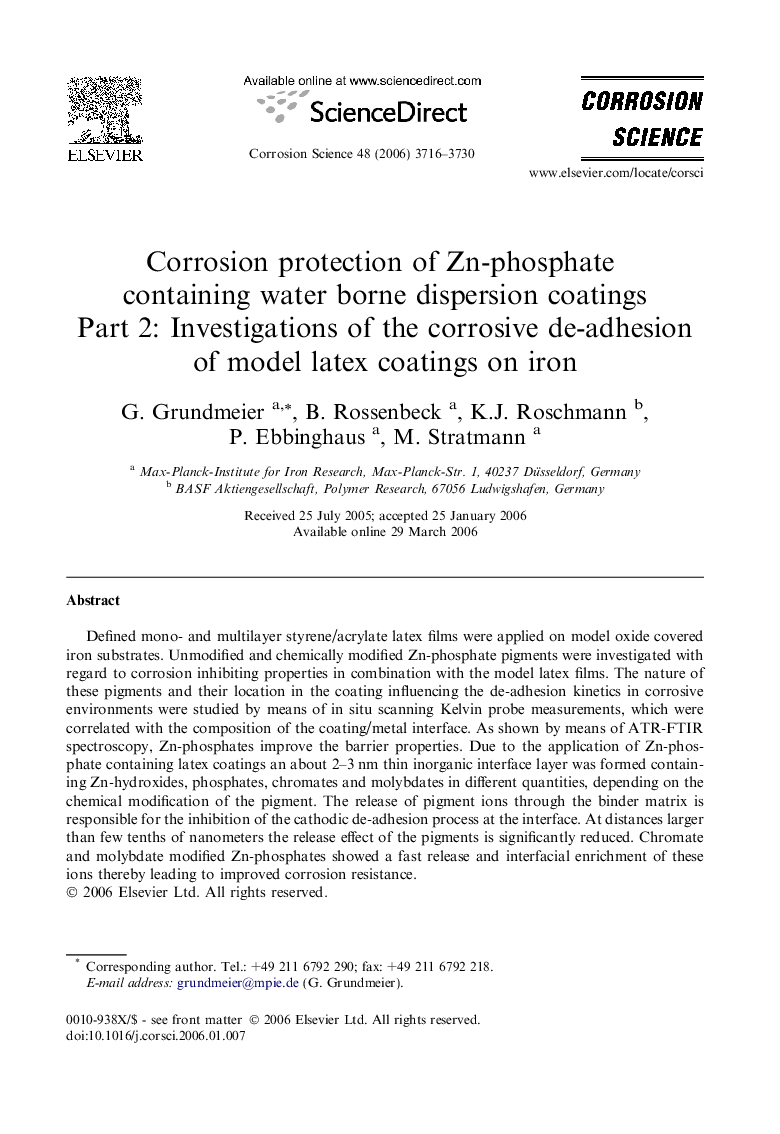| Article ID | Journal | Published Year | Pages | File Type |
|---|---|---|---|---|
| 1472315 | Corrosion Science | 2006 | 15 Pages |
Defined mono- and multilayer styrene/acrylate latex films were applied on model oxide covered iron substrates. Unmodified and chemically modified Zn-phosphate pigments were investigated with regard to corrosion inhibiting properties in combination with the model latex films. The nature of these pigments and their location in the coating influencing the de-adhesion kinetics in corrosive environments were studied by means of in situ scanning Kelvin probe measurements, which were correlated with the composition of the coating/metal interface. As shown by means of ATR-FTIR spectroscopy, Zn-phosphates improve the barrier properties. Due to the application of Zn-phosphate containing latex coatings an about 2–3 nm thin inorganic interface layer was formed containing Zn-hydroxides, phosphates, chromates and molybdates in different quantities, depending on the chemical modification of the pigment. The release of pigment ions through the binder matrix is responsible for the inhibition of the cathodic de-adhesion process at the interface. At distances larger than few tenths of nanometers the release effect of the pigments is significantly reduced. Chromate and molybdate modified Zn-phosphates showed a fast release and interfacial enrichment of these ions thereby leading to improved corrosion resistance.
